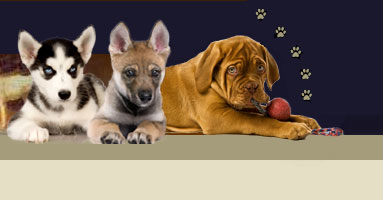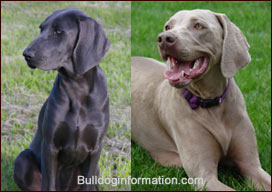.
.
.
.
Types of blue coats
There are four types of blue coats, depending on the pattern and whether or not the dog is born blue. They are all inherited differently.
Blue (dilute): a genetically black or dark brown coat becomes metallic blue-gray in appearance (blue Great Dane, blue Weimaraner). Always with a grey nose or paw pads.
The type of blue we will be examining into further details here, namely "born blue", appears as a mutation of the base color black. Only when the base color is black the dilute will be blue, while a chocolate or reddish brown dilute will give a lilac, mousey silver.
Weimeraners have a coat color that is based on dilution. The breed is predominantly fawn/lilac, i.e. a chocolate dilute. However, Weimaraners can also be black dilute, resulting in a blue coat. The nose color is usually also affected by the dilution, resulting in a grey or black nose, instead of brown. The same goes for other breeds, such as the German shepherd dog, i.e. red carriers will have a more lilac shade and those dogs that are homozygous for black will have a pure steel blue color.















